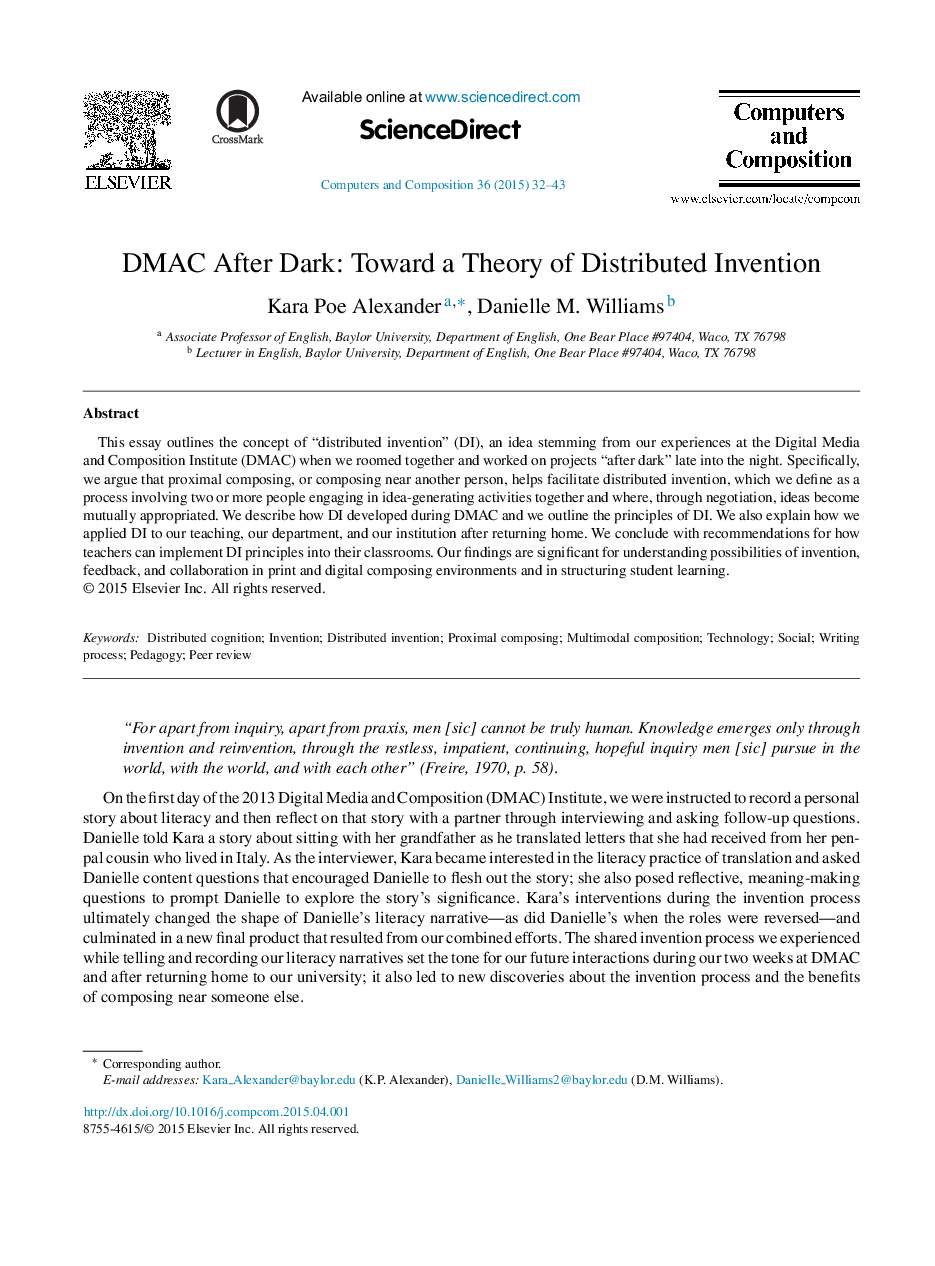| Article ID | Journal | Published Year | Pages | File Type |
|---|---|---|---|---|
| 6834525 | Computers and Composition | 2015 | 12 Pages |
Abstract
This essay outlines the concept of “distributed invention” (DI), an idea stemming from our experiences at the Digital Media and Composition Institute (DMAC) when we roomed together and worked on projects “after dark” late into the night. Specifically, we argue that proximal composing, or composing near another person, helps facilitate distributed invention, which we define as a process involving two or more people engaging in idea-generating activities together and where, through negotiation, ideas become mutually appropriated. We describe how DI developed during DMAC and we outline the principles of DI. We also explain how we applied DI to our teaching, our department, and our institution after returning home. We conclude with recommendations for how teachers can implement DI principles into their classrooms. Our findings are significant for understanding possibilities of invention, feedback, and collaboration in print and digital composing environments and in structuring student learning.
Keywords
Related Topics
Social Sciences and Humanities
Arts and Humanities
Language and Linguistics
Authors
Kara Poe Alexander, Danielle M. Williams,
